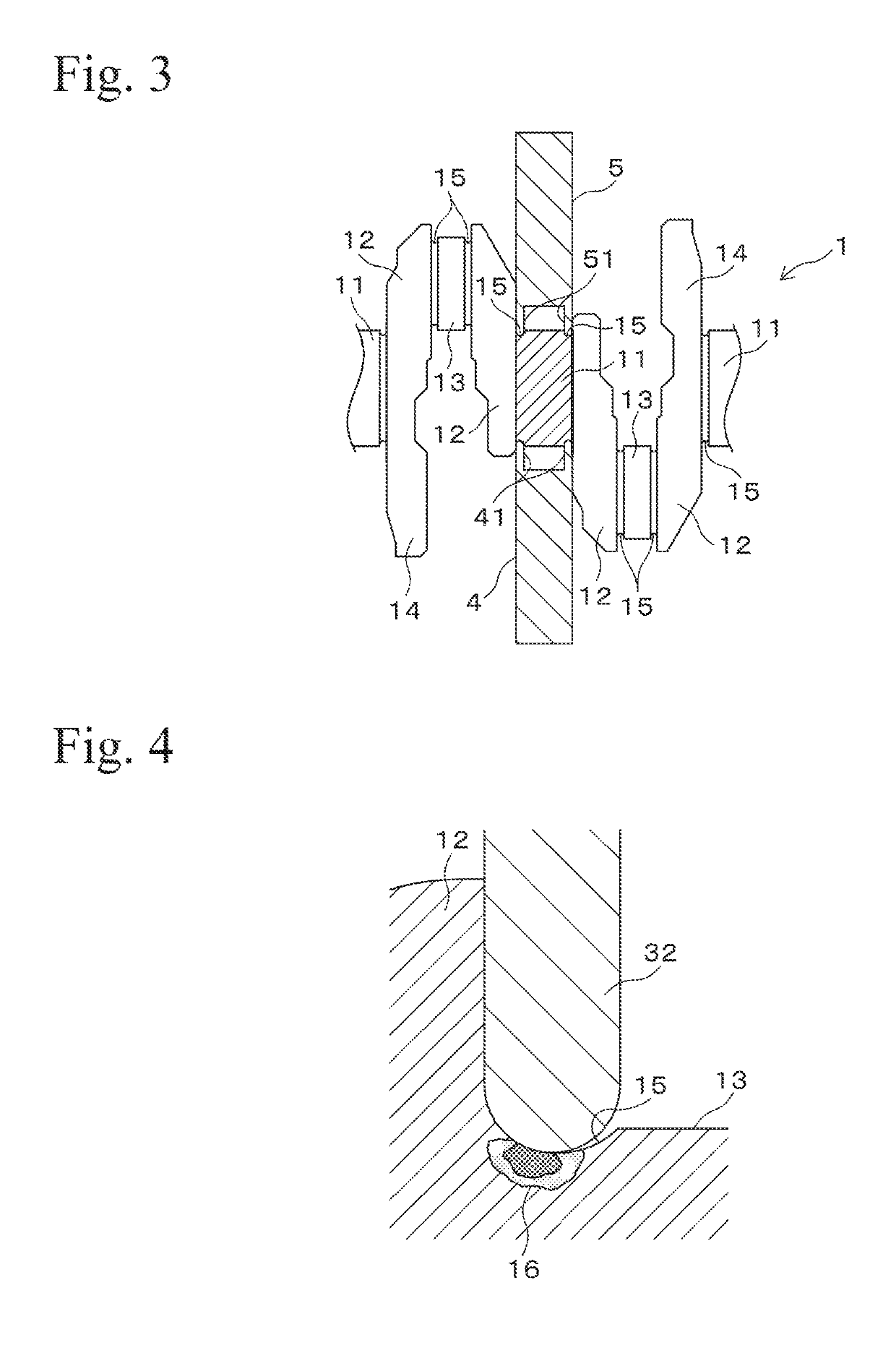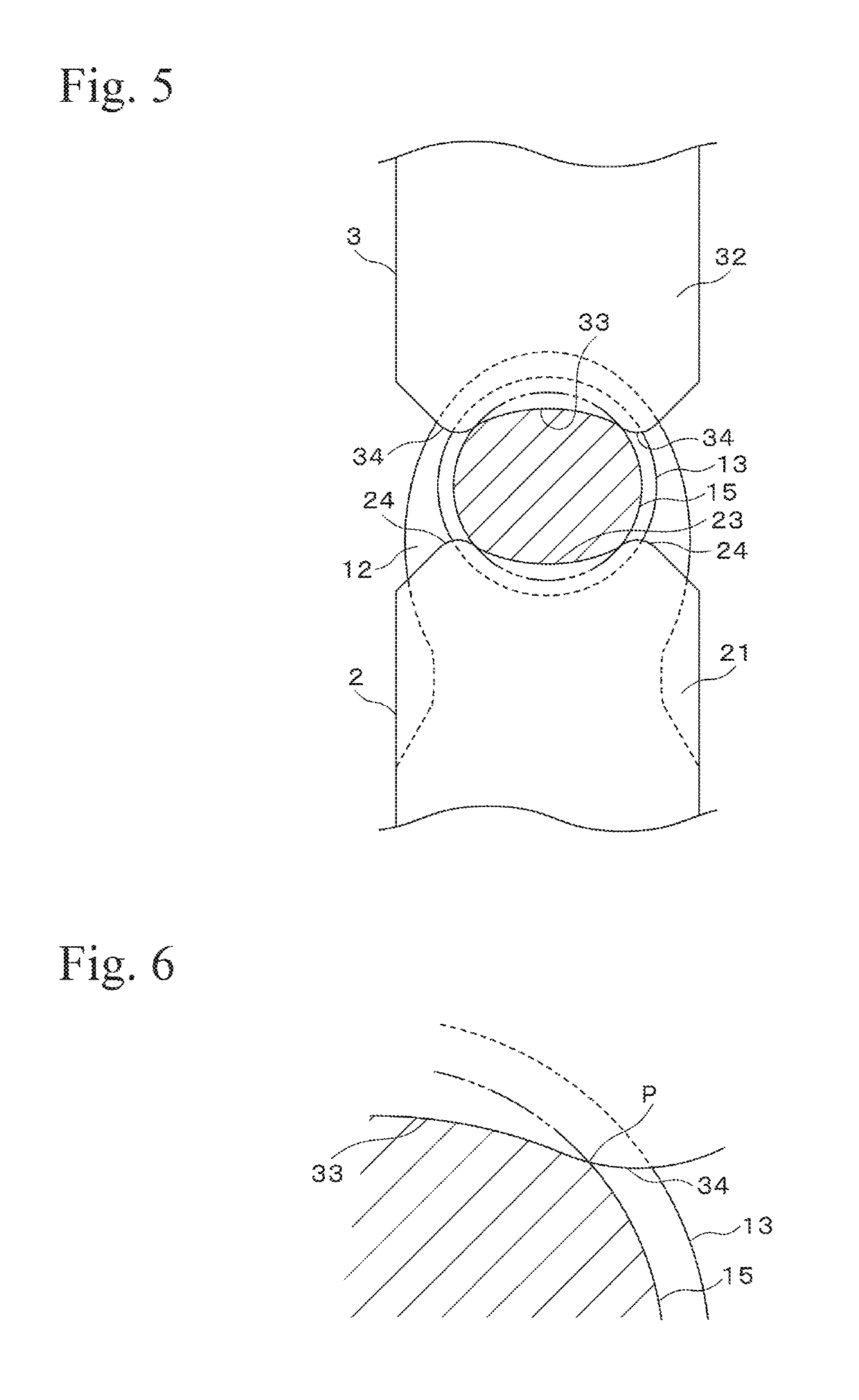Crankshaft and method of strengthening shaft component
a technology of crankshaft and shaft component, which is applied in the direction of heat treatment furnaces, heat treatment equipment, furnaces, etc., can solve the problems of crankshaft extension in a shaft direction, uneconomical processing time and effort, and bending, etc., and achieves tension residual stress, short time-consuming, and strong
- Summary
- Abstract
- Description
- Claims
- Application Information
AI Technical Summary
Benefits of technology
Problems solved by technology
Method used
Image
Examples
first embodiment
1. First Embodiment
[0030]In the following, a first embodiment of the present invention will be explained with reference to figures. FIG. 1 is a side view showing a crankshaft 1 according to the first embodiment of the present invention. The crankshaft 1 is formed by hot forging, and it has a structure in which crank arms 12 which protrude in a radial direction are formed on a journal pin 11 which is a rotating shaft, a crank pin 13 is bridged between edges of a pair of the crank arms 12, and a balance weight 14 is formed on another edge of a pair of the crank arms 12. At both corners of each journal pin 11 and each crank pin 13, fillet portions 15, which are grooves in a cross-sectional semicircle shape, are formed.
[0031]FIG. 2 shows a state in which the fillet portions 15 of the crank pins 13 are subjected to plasticity processing by a lower die 2 and an upper die 3. The crankshaft 1 is carried on the die 2 so that the crank pins 13 are oriented in a perpendicular direction. At one...
second embodiment
2. Second Embodiment
[0048]A second embodiment of the present invention will be explained with reference to FIGS. 7 and 8. FIG. 7 is a perspective side view showing a first lower punch 121 and a second upper punch 132. A pressing surface 133 is formed on an underside of the second upper punch 132. The pressing surface 133 has a formed section A in a range within 45 degrees at both sides in a circumferential direction from a normal line I direction (a direction from the center of curvature O to a center line of the second upper punch 132), which is an approximately cylindrical curved surface having radius of curvature which subtracts a pressing amount from radius of curvature of a cross-section of a fillet portion 15. Here, “the pressing amount” means a thickness in which the fillet portion 15 is processed along the normal line I by the pressing surface 133. The formed section A is almost equally processed by the pressing surface 133.
[0049]As shown in FIG. 8, the pressing surface 133 ...
PUM
| Property | Measurement | Unit |
|---|---|---|
| angle | aaaaa | aaaaa |
| compressive residual stress | aaaaa | aaaaa |
| radius of curvature | aaaaa | aaaaa |
Abstract
Description
Claims
Application Information
 Login to View More
Login to View More - R&D
- Intellectual Property
- Life Sciences
- Materials
- Tech Scout
- Unparalleled Data Quality
- Higher Quality Content
- 60% Fewer Hallucinations
Browse by: Latest US Patents, China's latest patents, Technical Efficacy Thesaurus, Application Domain, Technology Topic, Popular Technical Reports.
© 2025 PatSnap. All rights reserved.Legal|Privacy policy|Modern Slavery Act Transparency Statement|Sitemap|About US| Contact US: help@patsnap.com



